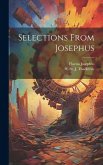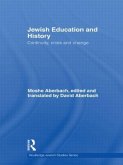Martin Goodman, Philip Alexander
Rabbinic Texts and the History of Late-Roman Palestine
Herausgeber: Goodman, Martin; Alexander, Philip
Schade – dieser Artikel ist leider ausverkauft. Sobald wir wissen, ob und wann der Artikel wieder verfügbar ist, informieren wir Sie an dieser Stelle.
Martin Goodman, Philip Alexander
Rabbinic Texts and the History of Late-Roman Palestine
Herausgeber: Goodman, Martin; Alexander, Philip
- Gebundenes Buch
- Merkliste
- Auf die Merkliste
- Bewerten Bewerten
- Teilen
- Produkt teilen
- Produkterinnerung
- Produkterinnerung
Proceedings of a conference held in March 2007 at the British Academy.
Andere Kunden interessierten sich auch für
![The History of the Jews in the Greco-Roman World The History of the Jews in the Greco-Roman World]() Peter SchäferThe History of the Jews in the Greco-Roman World167,99 €
Peter SchäferThe History of the Jews in the Greco-Roman World167,99 €![Magic in the Roman World Magic in the Roman World]() Naomi JanowitzMagic in the Roman World166,99 €
Naomi JanowitzMagic in the Roman World166,99 €![Selections From Josephus Selections From Josephus]() Flavius JosephusSelections From Josephus30,99 €
Flavius JosephusSelections From Josephus30,99 €![Jewish Education and History Jewish Education and History]() Moshe AberbachJewish Education and History187,99 €
Moshe AberbachJewish Education and History187,99 €![The Works Of Josephus: With A Life Written By Himself, Volume 2 The Works Of Josephus: With A Life Written By Himself, Volume 2]() Flavius JosephusThe Works Of Josephus: With A Life Written By Himself, Volume 238,99 €
Flavius JosephusThe Works Of Josephus: With A Life Written By Himself, Volume 238,99 €![The Works of Josephus: With a Life Written by Himself; Volume 3 The Works of Josephus: With a Life Written by Himself; Volume 3]() Flavius JosephusThe Works of Josephus: With a Life Written by Himself; Volume 338,99 €
Flavius JosephusThe Works of Josephus: With a Life Written by Himself; Volume 338,99 €![The Jews Among the Greeks and Romans The Jews Among the Greeks and Romans]() Max RadinThe Jews Among the Greeks and Romans31,99 €
Max RadinThe Jews Among the Greeks and Romans31,99 €-
-
-
Produktdetails
- Produktdetails
- Verlag: British Academy
- Seitenzahl: 380
- Erscheinungstermin: 13. Januar 2011
- Englisch
- Abmessung: 241mm x 164mm x 35mm
- Gewicht: 788g
- ISBN-13: 9780197264744
- ISBN-10: 0197264743
- Artikelnr.: 31198952
- Herstellerkennzeichnung
- Libri GmbH
- Europaallee 1
- 36244 Bad Hersfeld
- gpsr@libri.de
- Verlag: British Academy
- Seitenzahl: 380
- Erscheinungstermin: 13. Januar 2011
- Englisch
- Abmessung: 241mm x 164mm x 35mm
- Gewicht: 788g
- ISBN-13: 9780197264744
- ISBN-10: 0197264743
- Artikelnr.: 31198952
- Herstellerkennzeichnung
- Libri GmbH
- Europaallee 1
- 36244 Bad Hersfeld
- gpsr@libri.de
* Introduction
* Part I: The Issues
* 1: Philip Alexander: Using Rabbinic Literature as a source for the
History of Late-Roman Palestine: Problems and Issues
* 2: Fergus Millar: The Palestinian Context of Rabbinic Judaism
* 3: Peter Schäfer: Research into Rabbinic Literature: An attempt to
define the Status Quaestionis
* 4: Chaim Milikowsky: The Status Quaestionis of Research into Rabbinic
Literature
* 5: Peter Schäfer and Chaim Milikowsky: Current Views on the Editing
of the Rabbinic Texts of Late Antiquity: Reflections on a debate
after twenty years
* Part II: The Rabbinic Texts
* 6: Amram Tropper: The State of Mishnah Studies
* 7: Romen Reichman: The Tosefta and its Value for Historical Research:
Questioning the historical reliability of case stories
* 8: Gunter Stemberger: Halakhic Midrashim as Historical Sources
* 9: Sacha Stern: The Talmud Yerushalmi
* 10: Richard Kalmin: Problems in the use of the Bavli for the History
of Late-Roman Palestine: the example of Astrology
* 11: Alex Samely: Literary Structures and Historical Reconstruction:
the example of Amoraic Midrash
* 12: Wout van Bekkum: The Future of Ancient Piyyut
* 13: Robert Hayward: Targum
* 14: Robert Brody: The Epistle of Sherira Gaon
* 15: Peter SchäFer: Hekhalot Literature and the Origins of Jewish
Mysticism
* Part III: History
* 16: Seth Schwartz: 'Rabbinic Culture' and Roman Culture
* 17: Catherine Hezser: Material Culture and Daily Life
* 18: Moshe Lavee: Rabbinic Literature and the History of Judaism in
Late Antiquity: Challenges, methodology, and new approaches
* 19: William Horbury: Rabbinic Perceptions of Christianity and the
History of Roman Palestine
* 20: Aharon Oppenheimer: Politics and Administration
* 21: Hayyim Lapin: Economics and Society
* Conclusion
* Part I: The Issues
* 1: Philip Alexander: Using Rabbinic Literature as a source for the
History of Late-Roman Palestine: Problems and Issues
* 2: Fergus Millar: The Palestinian Context of Rabbinic Judaism
* 3: Peter Schäfer: Research into Rabbinic Literature: An attempt to
define the Status Quaestionis
* 4: Chaim Milikowsky: The Status Quaestionis of Research into Rabbinic
Literature
* 5: Peter Schäfer and Chaim Milikowsky: Current Views on the Editing
of the Rabbinic Texts of Late Antiquity: Reflections on a debate
after twenty years
* Part II: The Rabbinic Texts
* 6: Amram Tropper: The State of Mishnah Studies
* 7: Romen Reichman: The Tosefta and its Value for Historical Research:
Questioning the historical reliability of case stories
* 8: Gunter Stemberger: Halakhic Midrashim as Historical Sources
* 9: Sacha Stern: The Talmud Yerushalmi
* 10: Richard Kalmin: Problems in the use of the Bavli for the History
of Late-Roman Palestine: the example of Astrology
* 11: Alex Samely: Literary Structures and Historical Reconstruction:
the example of Amoraic Midrash
* 12: Wout van Bekkum: The Future of Ancient Piyyut
* 13: Robert Hayward: Targum
* 14: Robert Brody: The Epistle of Sherira Gaon
* 15: Peter SchäFer: Hekhalot Literature and the Origins of Jewish
Mysticism
* Part III: History
* 16: Seth Schwartz: 'Rabbinic Culture' and Roman Culture
* 17: Catherine Hezser: Material Culture and Daily Life
* 18: Moshe Lavee: Rabbinic Literature and the History of Judaism in
Late Antiquity: Challenges, methodology, and new approaches
* 19: William Horbury: Rabbinic Perceptions of Christianity and the
History of Roman Palestine
* 20: Aharon Oppenheimer: Politics and Administration
* 21: Hayyim Lapin: Economics and Society
* Conclusion
* Introduction
* Part I: The Issues
* 1: Philip Alexander: Using Rabbinic Literature as a source for the
History of Late-Roman Palestine: Problems and Issues
* 2: Fergus Millar: The Palestinian Context of Rabbinic Judaism
* 3: Peter Schäfer: Research into Rabbinic Literature: An attempt to
define the Status Quaestionis
* 4: Chaim Milikowsky: The Status Quaestionis of Research into Rabbinic
Literature
* 5: Peter Schäfer and Chaim Milikowsky: Current Views on the Editing
of the Rabbinic Texts of Late Antiquity: Reflections on a debate
after twenty years
* Part II: The Rabbinic Texts
* 6: Amram Tropper: The State of Mishnah Studies
* 7: Romen Reichman: The Tosefta and its Value for Historical Research:
Questioning the historical reliability of case stories
* 8: Gunter Stemberger: Halakhic Midrashim as Historical Sources
* 9: Sacha Stern: The Talmud Yerushalmi
* 10: Richard Kalmin: Problems in the use of the Bavli for the History
of Late-Roman Palestine: the example of Astrology
* 11: Alex Samely: Literary Structures and Historical Reconstruction:
the example of Amoraic Midrash
* 12: Wout van Bekkum: The Future of Ancient Piyyut
* 13: Robert Hayward: Targum
* 14: Robert Brody: The Epistle of Sherira Gaon
* 15: Peter SchäFer: Hekhalot Literature and the Origins of Jewish
Mysticism
* Part III: History
* 16: Seth Schwartz: 'Rabbinic Culture' and Roman Culture
* 17: Catherine Hezser: Material Culture and Daily Life
* 18: Moshe Lavee: Rabbinic Literature and the History of Judaism in
Late Antiquity: Challenges, methodology, and new approaches
* 19: William Horbury: Rabbinic Perceptions of Christianity and the
History of Roman Palestine
* 20: Aharon Oppenheimer: Politics and Administration
* 21: Hayyim Lapin: Economics and Society
* Conclusion
* Part I: The Issues
* 1: Philip Alexander: Using Rabbinic Literature as a source for the
History of Late-Roman Palestine: Problems and Issues
* 2: Fergus Millar: The Palestinian Context of Rabbinic Judaism
* 3: Peter Schäfer: Research into Rabbinic Literature: An attempt to
define the Status Quaestionis
* 4: Chaim Milikowsky: The Status Quaestionis of Research into Rabbinic
Literature
* 5: Peter Schäfer and Chaim Milikowsky: Current Views on the Editing
of the Rabbinic Texts of Late Antiquity: Reflections on a debate
after twenty years
* Part II: The Rabbinic Texts
* 6: Amram Tropper: The State of Mishnah Studies
* 7: Romen Reichman: The Tosefta and its Value for Historical Research:
Questioning the historical reliability of case stories
* 8: Gunter Stemberger: Halakhic Midrashim as Historical Sources
* 9: Sacha Stern: The Talmud Yerushalmi
* 10: Richard Kalmin: Problems in the use of the Bavli for the History
of Late-Roman Palestine: the example of Astrology
* 11: Alex Samely: Literary Structures and Historical Reconstruction:
the example of Amoraic Midrash
* 12: Wout van Bekkum: The Future of Ancient Piyyut
* 13: Robert Hayward: Targum
* 14: Robert Brody: The Epistle of Sherira Gaon
* 15: Peter SchäFer: Hekhalot Literature and the Origins of Jewish
Mysticism
* Part III: History
* 16: Seth Schwartz: 'Rabbinic Culture' and Roman Culture
* 17: Catherine Hezser: Material Culture and Daily Life
* 18: Moshe Lavee: Rabbinic Literature and the History of Judaism in
Late Antiquity: Challenges, methodology, and new approaches
* 19: William Horbury: Rabbinic Perceptions of Christianity and the
History of Roman Palestine
* 20: Aharon Oppenheimer: Politics and Administration
* 21: Hayyim Lapin: Economics and Society
* Conclusion








